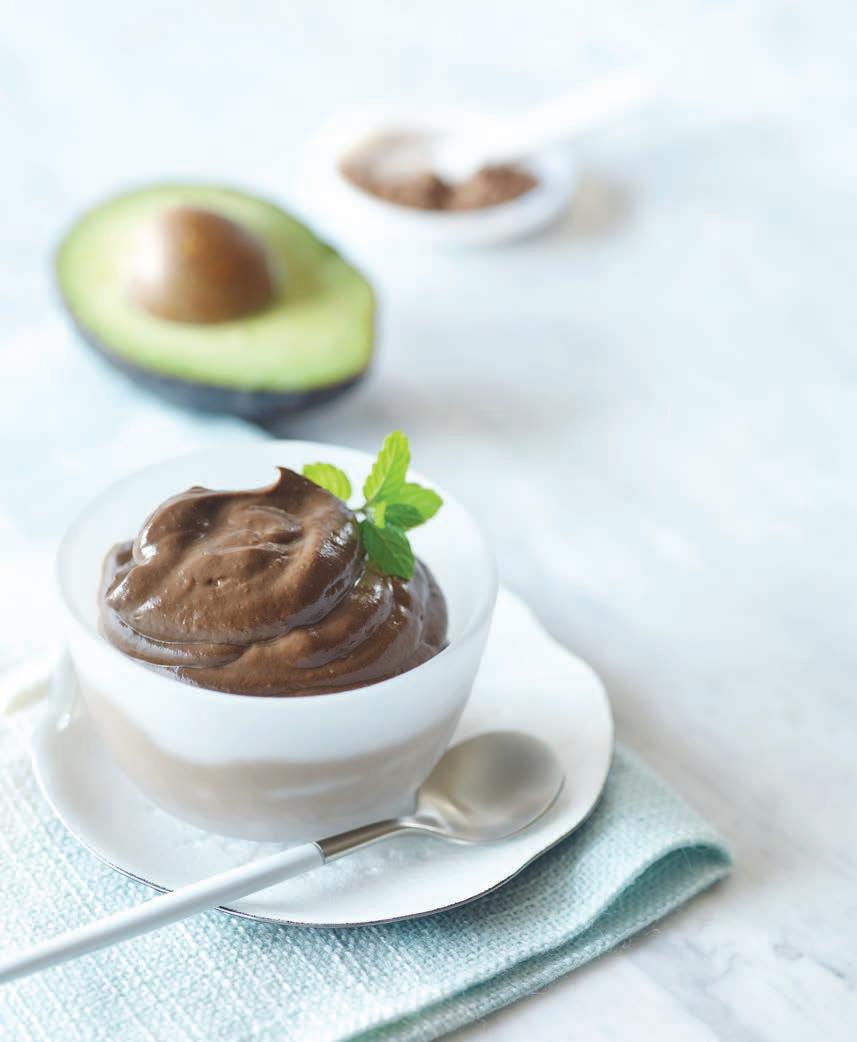
4 minute read
CLEAN EATING
going primal for valentine’s day Use simple whole-food ingredients to prepare a low-fuss romantic meal for two
Among the many great things about the Paleo/Primal Diet is that it’s easy to use a handful of quality, whole-food ingredients to prepare a decadent, gourmet-tasting dinner with little fuss. Grains and legumes take a lot of time to cook. By cutting out these ingredients, you can really cut down on the prep time.
Advertisement
Just think about your preferences, and decide on red meat, poultry, or seafood. Then add some tastily prepared vegetables and a yummy, easy-to-fix dessert.
Animal Protein: If you and your significant other love red meat, buy grass-fed organic steaks or lamb chops. Season them with salt, pepper, and herbs, and broil on both sides to desired doneness. If you prefer kabobs, try broiled olive-oil-and-herb-marinated steak or lamb kabobs on skewers. If poultry is more your thing, try broiled marinated chicken kabobs. Or you could do something more ambitious, such as roast an organic chicken.
If you’re seafood lovers, consider making shrimp scampi or seared scallops. These tasty morsels are fun to share.
Did You Know? The Paleo and Primal eating plans both avoid grains and legumes, which drastically cuts down prep time. Vegetables: Try making sautéed mushrooms—a seductive choice to go with steaks. Steamed globe artichokes, dipped in liquid coconut oil and seasoned with a little salt and garlic powder, are another sensuous option.
Or prepare roasted asparagus with olive oil and salt and pepper. It’s a simple-but-elegant vegetable side that serves as a nice companion to red meat, poultry, or seafood.
With dishes like shrimp scampi and seared scallops, try a vegetable-based pasta—either spaghetti squash with pesto sauce, which takes more time and effort to prepare, or zucchini noodles, which can be made in a jiffy by buying Organic Veggie Spirals by the Veggie Noodle Co. Simply sauté the
zucchini noodles in olive oil or coconut oil for 3–4 minutes.
Salad is another vegetablebased staple. Make a Greekstyle salad with lettuce, olives, cucumber, red onion, tomatoes, olive oil, lemon juice, and herbs. Or, for something special, splurge and buy a bottle of Primal Kitchen Caesar Dressing and lightly toss it with romaine lettuce leaves and vegetables of your choice.
Dessert: Let’s face it: Most people are going to want something chocolate for dessert. It can be super simple—Chocolate Avocado Mousse, for example (see recipe below).
If you’re not a chocolate lover and don’t have time to fuss, consider buying Hail Merry Coconut Vanilla Crème or Meyer Lemon Tarts. Made with an almond cookie crust and a virgin coconut oil-based filling, these tarts have a luscious mouth feel.
Finally, if you or your significant other avoid concentrated sweeteners of any type, fruit can serve as the ultimate after-dinner treat. Serve bowls of thawed frozen cherries—they’re delicious all on their own. Or have playful, romantic fun feeding each other organic orange segments or grapes.
Chocolate Avocado Mousse Serves 2
2 medium avocados 3 Tbs. cacao powder 1 Tbs. vanilla 1–2 Tbs. honey (or coconut nectar) 1 tsp. cinnamon 2–3 Tbs. unsweetened almond milk, optional
1. Combine avocados, cacao powder, vanilla, honey (or coconut nectar), and cinnamon in food processor, and blend to desired consistency. Add unsweetened almond milk, if desired, for a fluffier mousse..

Per serving: 470 cal; 9g prot; 34g total fat (7g sat fat); 37g carb; 0mg chol; 35mg sod; 20g fiber; 11g sugar
PALEO VS. PRIMAL: WHAT’S THE DIFFERENCE? Both the Paleo Diet and the Primal Diet are based on the same principles. They start from an ancestral perspective of what our Paleolithic huntergatherer ancestors ate: animal protein, plenty of vegetables, and fruit, nuts, and seeds.
Some people think there are big differences between the two diets, and particularly think that the Primal Diet is more lenient with dairy products. That’s not true. Both diets have evolved and now, for the most part, are identical. The truth is that whether you follow a Paleo or Primal Diet, pasteurized and homogenized dairy products should be avoided, but raw and fermented dairy products can be eaten (unless you’re allergic to them).
People also think that the Paleo diet is opposed to saturated fats. But that’s not really true either. Both Paleo and Primal Diet advocates approve of saturated fats from “clean,” non-polluted sources. The main difference between the two diets, according to Jeremy Hendon, of Paleo Living magazine, is their origins. Loren Cordain, PhD, popularized the Paleolithic diet with his 2002 book, The Paleo Diet. Mark Sisson wrote The Primal Blueprint in 2009. And that’s basically the difference.
The best advice? Follow the diet that resonates the most with you, and focus on the improved health you can achieve by complying with the principles of either one.










